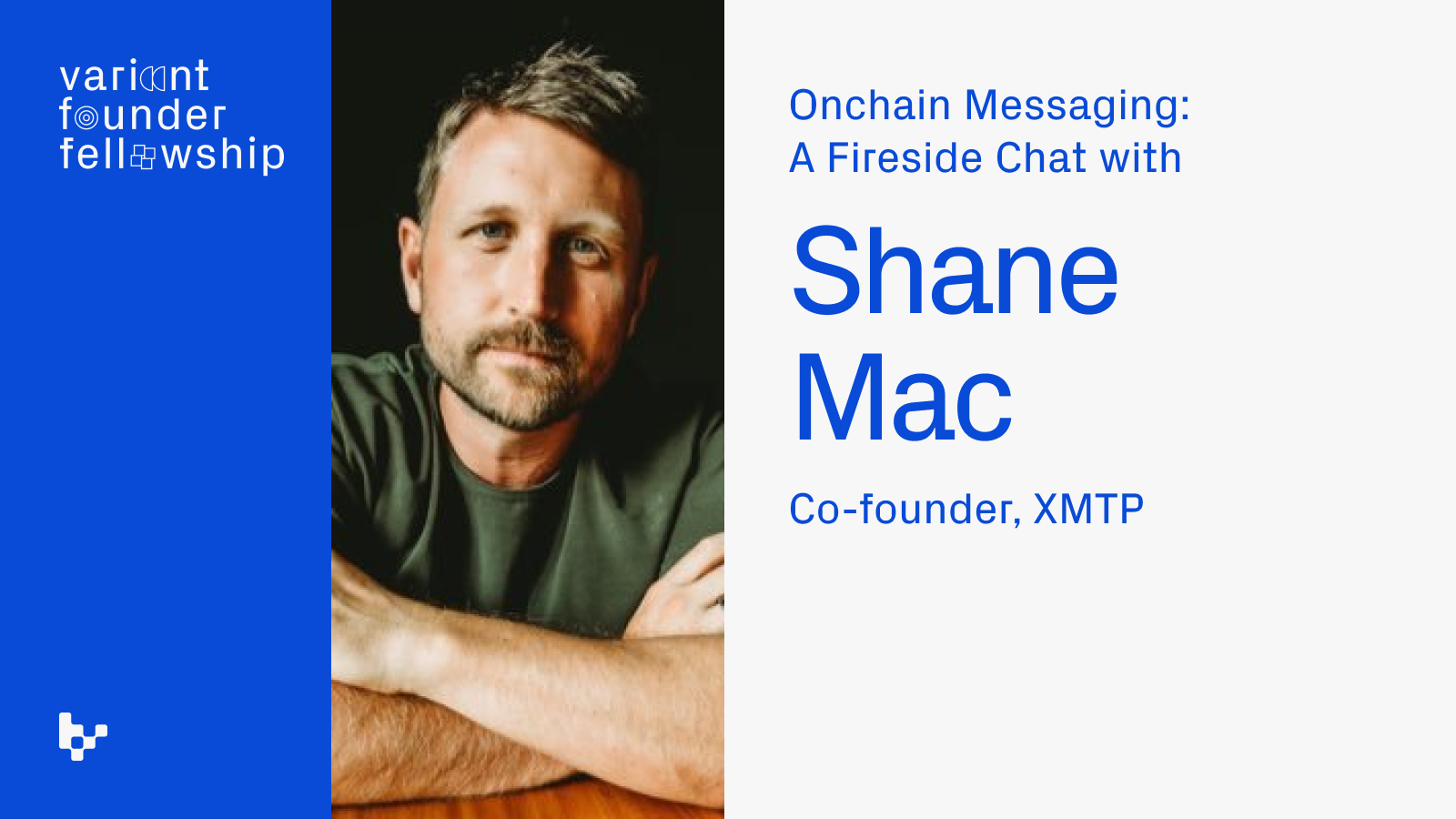Variant Team

Shane Mac Has a Message to Deliver (via Your Blockchain Wallet)
Shane Mac is the co-founder of XMTP, an open protocol and network for web3 messaging.
In a wide-ranging conversation with Li Jin for our inaugural Variant Founder Fellowship cohort, he discussed how web3 messaging can end the cold start problem for developers, why startups shouldn’t focus on adding new features, and how to make your crypto app ubiquitous.
Below the video, check out our biggest takeaways from his talk.
Wallet addresses are a “new identity”
Websites gave us email, and cell phones led to SMS. In web3, Shane believes, the wallet is primed to become the main communication channel. Essentially, you’ve got all these addresses but no way to reach them. (Shane explains why messaging means developers can stop worrying about the cold start problem at 4:36.)
Why XMTP chose protocol over product
“With startups, it’s all about the sequencing of what you do and the constraints by which you operate,” says Shane. “And getting that wrong is how you die.”
Shane and XMTP spent a lot of energy and money building an app, but struggled to drum up excitement for it among its customer base: developers. Yet those devs were excited by the prospect of messages displaying within a wallet. That means Shane and team had to shift the strategy to make a network that could be ubiquitous, rather than an app—a seemingly harder task. Once they did, they set about getting trusted partners to use XMTP. (Hear how Shane scored a key pact with Coinbase at 13:20.)
“Think smaller to build bigger”
There’s no shortage of challenges in web3 waiting to be solved. Don’t try to solve them all at once, Shane urges. Instead, get specific, both in terms of the problem and the specific customer. “I always just try to keep reducing the surface area, so then my go-to-market is so targeted.” (Shane explains the temptation that causes many web3 companies to abandon product principles at 22:34.)
Don’t add features, remove them.
Founders can too often get caught up in the feature hamster wheel. “You end up lying to yourself as a founder by thinking the next feature is going to be the one that grows,” Shane says. Instead, he advises focusing on “editing, reducing or removing the features you have that aren’t growing.”
Building more features instead of refining your core offering leads to a problem where you don’t have one thing that everybody loves, but instead “six things that kind of work.” (Find out what Shane asks founders to see if they’re focusing on the right thing at 24:42.)
+++
This post is for general information purposes only. It does not constitute investment advice or a recommendation or solicitation to buy or sell any investment and should not be used in the evaluation of the merits of making any investment decision. It should not be relied upon for accounting, legal or tax advice or investment recommendations. You should consult your own advisers as to legal, business, tax, and other related matters concerning any investment. Certain information contained in here has been obtained from third-party sources, including from portfolio companies of funds managed by Variant. While taken from sources believed to be reliable, Variant has not independently verified such information. Variant makes no representations about the enduring accuracy of the information or its appropriateness for a given situation. This post reflects the current opinions of the authors and is not made on behalf of Variant or its Clients and does not necessarily reflect the opinions of Variant, its General Partners, its affiliates, advisors or individuals associated with Variant. The opinions reflected herein are subject to change without being updated.